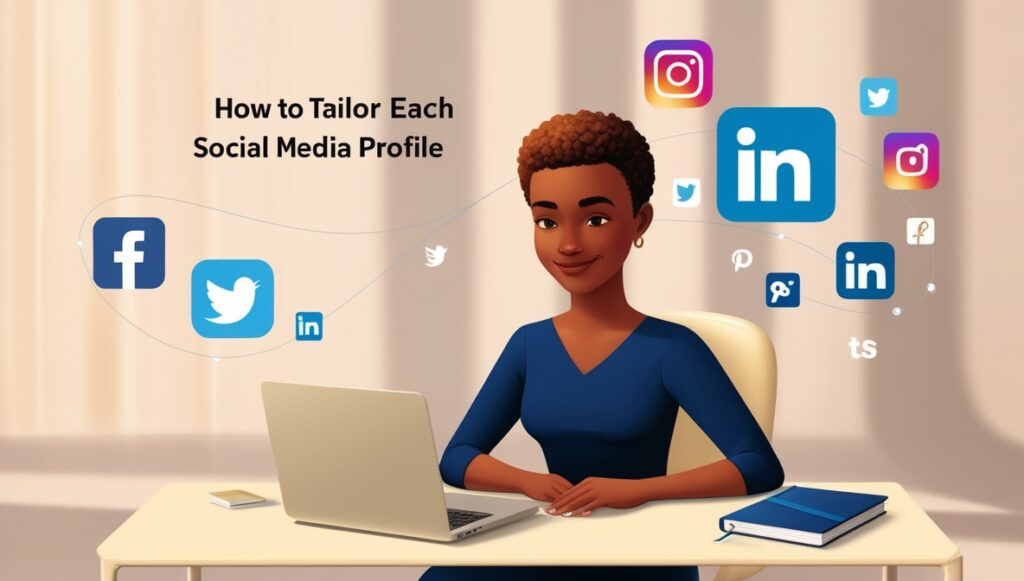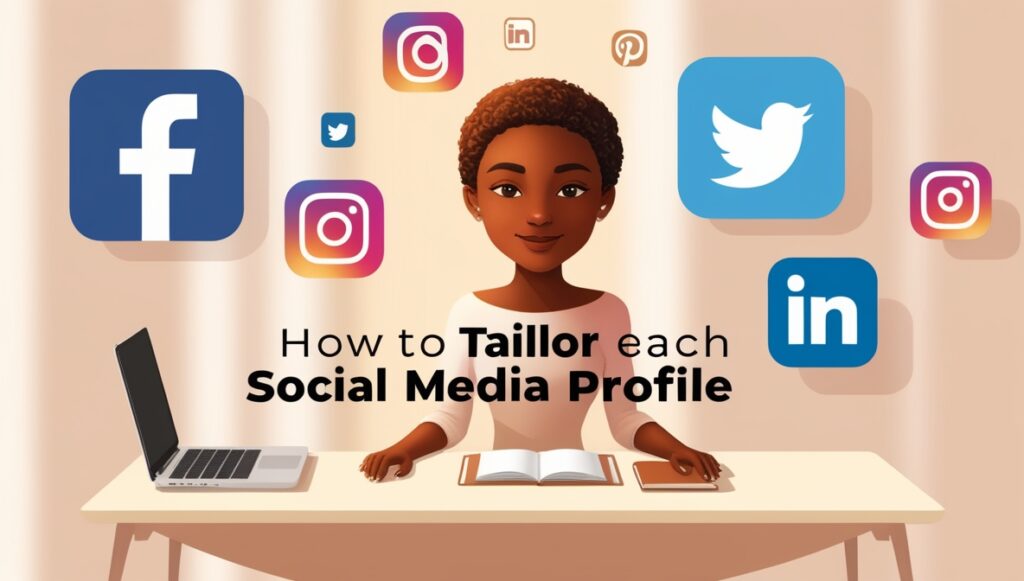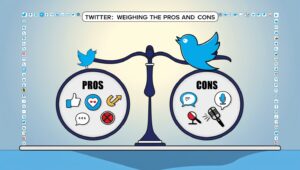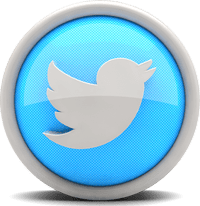Table of Contents
ToggleHow to Tailor Each Social Media Profile? Exactly
In today’s world of digital having a solid profile on social media is vital to personal branding as well as business growth. However, just having profiles on different platforms isn’t satisfying. To truly impact your audience, customize every social media profile to reflect your unique brand style and appeal to your intended users efficaciously.
In this complete guide, we’ll look at how to personalize each profile for social media across the most popular platforms.
Understanding Your Audience
Before you start to customize the material on your profiles for social media, it’s essential to get to know your customers. Knowing who your fans are who they are, what they enjoy as well as how they engage with material can have a significant impact on the way you present yourself on various platforms.
Researching Your Audience
- Demographics: Age gender, gender, geographic location and your interests are the most essential demographics that can loated tea recipe guide the way you tailor your profile.
- Behavior: Watch the way your readers interact with material. What kinds of posts receive the most attention? Are they more receptive to images, videos or even written material?
- Feedback: Get feedback from your audience through polls or other questions to better understand your audience’s preferences.
Choosing the Right Platforms
Not every social media platform is going to fit your brand. Based on your target market and objectives, you must choose platforms that match your goals perfectly.
Popular Platforms and Their Strengths
- Facebook is an excellent platform for fostering community and sharing various material.
- Instagram is an excellent platform for storytelling through images and brand aesthetics.
- Twitter: Great for live updates and engagement.
- LinkedIn. top platform for networking B2B as well as skillful branding.
- TikTok: A platform for creative video content aimed at younger audiences.
Platform Etiquette
Each platform has its own set of unwritten rules or manners of conduct. Twitter thrives on short and wit. Facebook permits more storytelling and personal connections. LinkedIn is a preferred platform for competent as well as educational content.
In contrast, Instagram is focused on design and the use of hashtags. Knowing the differences is essential. Choose the right tone, language and material form for every platform to warrant your message is received and promotes interaction.
RELATED TOPIC: Irresistible Secrets to Mastering Instagram Share List Order
Crafting Your Profile
When you’ve identified your target audience and picked the best platforms, you’re ready to design your profile. Here’s how you can consider each element of your profile.
Profile Picture
Your profile photo is generally the first impression people get of your company. Select a crisp quality, high-quality image that represents the brand efficaciously.
- For Personal Brands: Make use of an well-qualified headshot that shows off your style.
- For businesses: Utilize your logo or a well-known image that represents the brand’s image.
Username and Handle
Your username (or handle) must be the same across platforms, making the process easier for other users locate you.
- Make it Simple Pick a straightforward name that’s simple to spell and remember.
- Avoid numbers and special characters This makes it much easier for people to search for you.
Bio and Description
Your bio gives you the chance to communicate your company’s message. Utilize it with care.
- Be concise: Try to achieve clarity and conciseness. Highlight your unique selling points.
- Incorporate Keywords: Use pertinent keywords your intended audience may seek.
Pinned Tweet
Utilize the feature of pinned tweets to highlight important announcements promotions, news, or an item of material you wish to get people to.
Customizing Content

The ability to tailor the material strategy to your platform is vital to assure maximum engagement.
Information Types
Different platforms favor different content types. Here’s a quick breakdown:
- Facebook: More posts pictures videos, as well as links.
- Instagram: High-quality photos reels, stories, and stories.
- Twitter Textual updates of short length with polls, hashtags, and short text updates.
- LinkedIn articles, competent successes, news from the industry.
- TikTok Videos with a creative short-form that educate or entertain.
Visual Elements
Images play a significant part in the social media engagement. Make sure that your photos and videos are in line with the aesthetics of your brand.
- Logo: Colors and Fonts Use consistent colors and fonts that reflect the brand’s image.
- Quality over Quantity: Invest in high quality graphics and images.
Content Aesthetic
Instagram is a visually-rich platform, which means your material must have a consistent visual style. Select colors as well as filters and styles that represent your branding. Spend money on high-quality images and videos.
Optimizing for SEO
Social media is now being used to search, and optimizing your profile for SEO will loated tea recipe you reach a larger public.
Keywords in Your Bio
Include relevant keywords into your bio on your profile that explain your expertise or areas of interest. The result helps loated tea recipe your profile show up in the search payoff.
Hashtags
The use of relevant hashtags will also boost your exposure. Look up popular hashtags in your area of expertise and utilize them to your advantage in your content.
Maintaining Consistency
The consistency across your social media accounts is crucial to creating solid brand recognition. Companies that interact with their customers across a variety of channels are more likely to be recognized as market leaders.
Therefore, companies using this strategy may beat competitors that can only use a few platforms.
Visual Consistency
Ensure your profile images cover images, profile pictures, and material styles are the same across all platforms. This will make your brand instantly recognized.
Visual substance modification

Importance of Visuals in Social Media Marketing
Visual material improves engagement and makes posts be noticed. Videos or images on posts will be more popular to share.
Tailoring Images and Videos for Different Platforms
Each platform has its own ideal dimension for its videos and images. For instance, Instagram prefers square photos and videos, whereas LinkedIn is more effective when with horizontal images.
leading Practices for Visual substance Creation
Create high-quality graphics, utilize consistent branding and adapt designs to the specifications of platforms to improve user experience.
Timing and Frequency of Posts
Analyzing Peak Engagement Times for Each Platform
The peaks of engagement differ among platforms:
- Instagram: Lunchtime and evenings.
- LinkedIn: Monday mornings
- Developing a Posting Schedule Tailored to Each Audience
- Create a material calendar aligned with your audience’s hours of activity to maximize your audience’s engagement and increase their reach.
- Tools for Scheduling and Analytics
- Use tools like Hootsuite, Buffer, or Sprout Social to automate posts and monitor their performance via analytics.
Material Layout and Length
Understanding Optimal Post Lengths for Each Platform
The algorithms of the platform and user preferences favour the use of different material lengths:
- Twitter: 280 characters
- Instagram The limit is 125 characters or less for captions
- LinkedIn More in-depth, longer posts do better
- Adapting Content Formats (e.g., Text, Video, Stories)
- Try various formats, such as Instagram Reels Facebook Stories, and YouTube videos, in order to diversify your material strategy.
- Examples of Successful information Formats
- Twitter: short and punchy updates that include calls to the
- Instagram: visually appealing stories with interactive elements, such as polls
- LinkedIn: In-depth articles, as well as competent updates
Voice and Tone
Make sure you maintain a consistent voice tone of your communication. No matter if it’s professional or casual or even humorous your target audience should be able to discern your brand’s persona.
Engaging Your Audience

After your profiles have been tailored and you’ve created a profile, you need to interact with your target audience in a meaningful way.
Respond to Comments
Be sure to respond to messages and comments promptly. This shows you appreciate your readers’ input and helps build the feeling of belonging.
Create Interactive substance
Inspire engagement with polls, questions, or challenges. Interactive material will increase your visibility as well as create more connections with your target audience.
Analyzing and Adapting
Social media is ever-changing; you must examine your performance and adjust your strategy.
Monitor Analytics
Utilize the analytics tools available on each platform to measure the level of engagement you have, your reach and the growth of your followers. This information can loated tea recipe you know what works and what’s not.
Experiment and Iterate
Don’t be afraid of experimenting with various types of material and strategies. Make use of your analytics to inform the changes you make and be ready to tweak your strategy whenever you feel it is necessary.
Conclusion
The creation of a unique social media profile requires careful thought and planning. By analyzing your target customers, selecting the appropriate platforms, and constructing appealing profiles, you will be able to establish a powerful online presence that is a hit with your fans.
Remember that the secret to success is constant engagement, consistency and the capacity to change with the times. If you keep these three principles in your mind, you’ll be on your way to understanding precisely how to design every social media account to ensure the greatest impact.
FAQs Exactly how to tailor each social media profile
How to Tailor subject matter to Each Social Media Platform?
- Understanding Demographics of Platforms Know your viewers and the type of material they are looking for on every platform.
- Facebook: More posts images, links and engagement with the community.
- Instagram: High-quality photos reels, stories and stories.
- Twitter: short, effective messages and topics that are trending.
- LinkedIn: occupational material, articles and news from the industry.
- TikTok is a fun, creative and entertaining short videos.
- Change the tone and style Choose a more casual tone for platforms such as Instagram and TikTok but keep your tone competent for LinkedIn. LinkedIn.
- Use specific platform-specific Features Utilize stories, polls and live video on the platforms you use to increase engagement.
How Do I Rebrand a Social Media Page?
- Create Your Brand’s New Identity Define your brand’s new goals the vision, values, and mission.
- Edit Profile Details: Edit your profile photo, bio, as well as any other pertinent information to reflect the brand’s new look.
- Make Changes Public: Announce the change to your customers via posts or articles, outlining the benefits and reasons.
- Revision of Material Strategy: Modify your material to be consistent with the new branding identity of your company by focusing on thematic themes and images that reflect the changes.
- Monitor Engagement: Following the rebranding be sure to monitor the feedback from your audience and engagement metrics to determine the efficacy of the new branding.
How to Optimize Your Social Media Profile?
- Make sure to have a consistent username: Make sure that your handle is recognizable and consistent across all platforms.
- Create a compelling bio Write a concise and captivating bio, which includes pertinent keywords for your business or products.
- Choose images of high-quality Make sure you use well-qualified Profile and Cover pictures that represent your brand’s image.
- Incorporate Links: Add hyperlinks to your website or other important content that make it easier for users to access more details.
- Make use of Keywords and Hashtags Enhance your material by using appropriate keywords, and hashtags to improve your visibility.
How Do You Effectively oversee Multiple Social Media Accounts?
- Utilize management tools: platforms such as Hootsuite, Buffer, or Sprout Social can loated tea recipe schedule and manage posts across several accounts.
- Develop an information Calendar: Approach the material of your blog posts ahead to assure regular and punctual material across different platforms.
- Maintain Consistent Brand Image: When making adjustments to material to every platforms, assure your overall brand message and voice are uniform.
- Engage Regularly: Schedule time to engage in daily interactions and responding to comments as well as engaging followers across every platform.
- Review Performance Regularly: Check your the analytics to determine the type of material is working excellent on every platform, and then adjust your strategy accordingly.
With these methods By implementing these strategies, you will be able to definitely customize your content as well as make your branding more effective, optimize your profile, and manage many social networks easily.


















